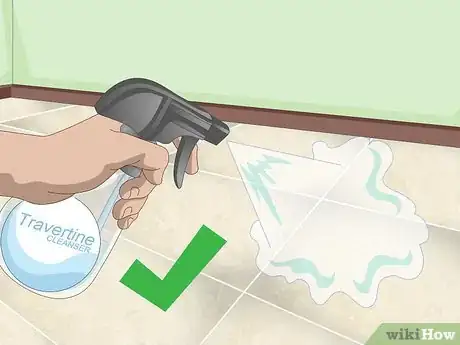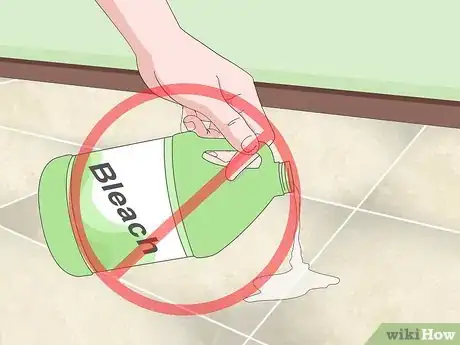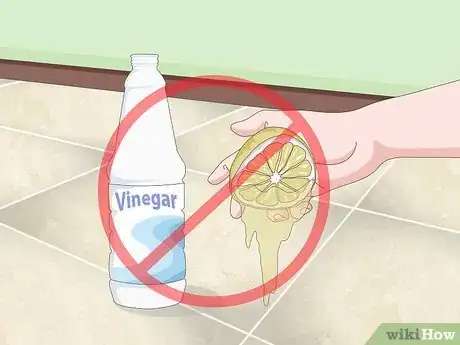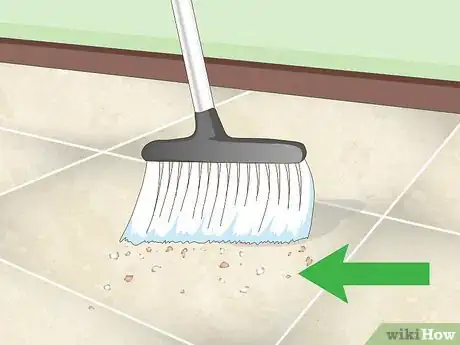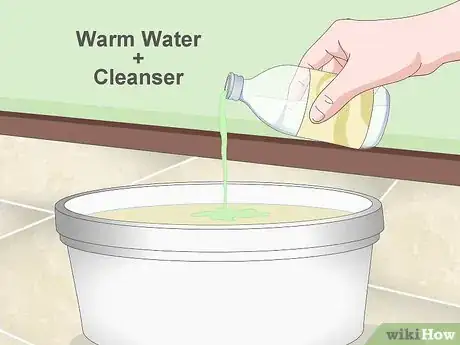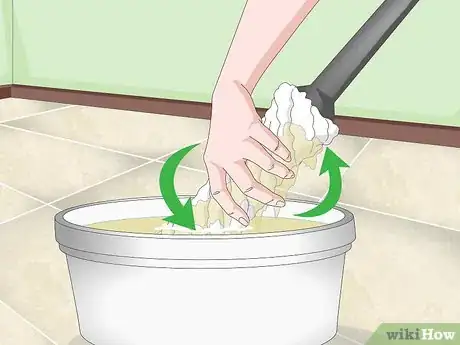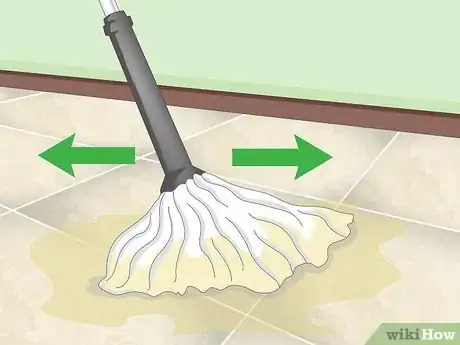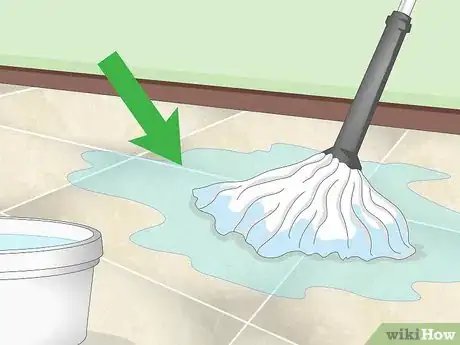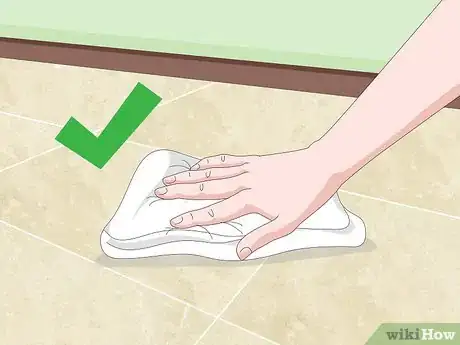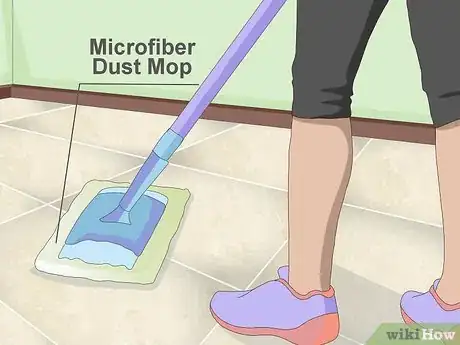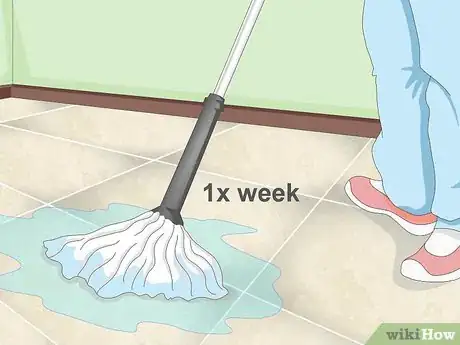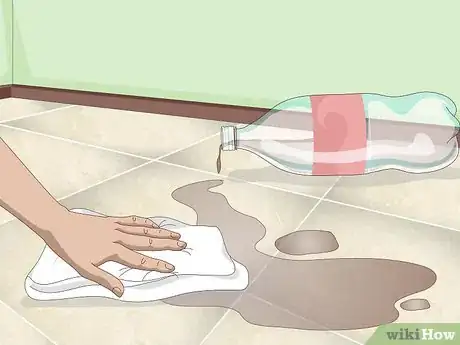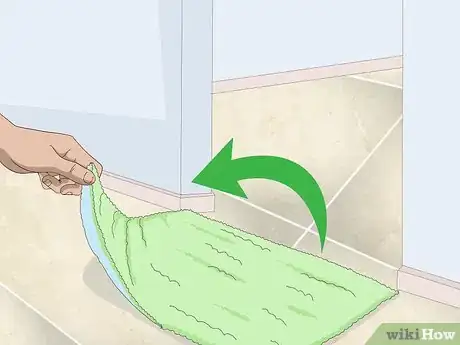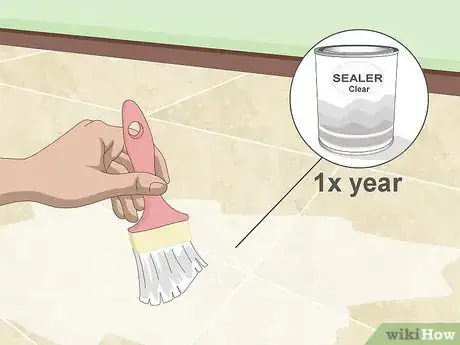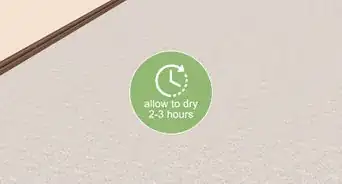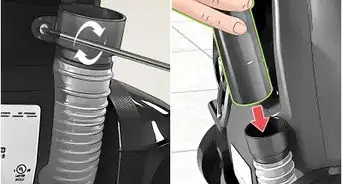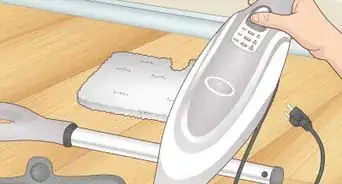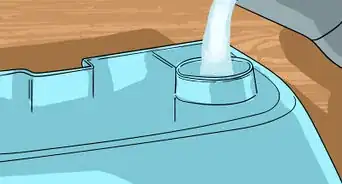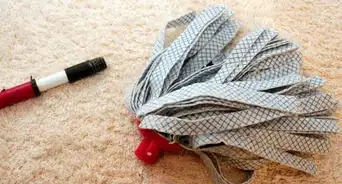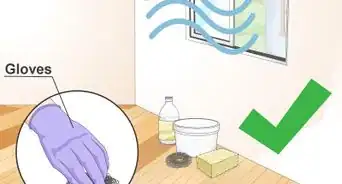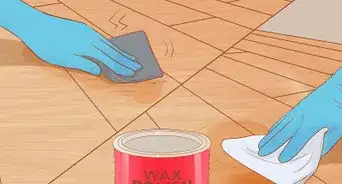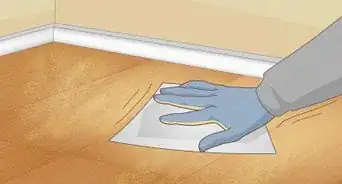This article was co-authored by Michelle Driscoll, MPH. Michelle Driscoll is the Owner of Mulberry Maids, which is based in Fort Collins, Colorado. With five years of experience, her business specializes in cleaning homes and small offices. She holds a Masters in Public Health from the Colorado School of Public Health. Additionally, Mulberry Maids has an A+ rating from the Better Business Bureau.
This article has been viewed 53,902 times.
Travertine floors are a beautiful addition to any home and require regular maintenance. Regularly removing loose dirt and debris with a microfiber dust mop can prevent scratches and damage on the surface of your floors. Mopping the floors at least once a week with a travertine-friendly cleanser will help remove grime and buildup. You should also seal your travertine floors at least once a year.
Steps
Choosing a Cleanser
-
1Use a cleanser formulated for travertine. Travertine can become dull and damaged if you use a harsh cleanser. Consider purchasing a floor cleaner formulated for travertine to use regularly. The label should clearly state if the cleanser is formulated specifically for travertine.
- Opt for a cleanser with a neutral pH of 7 or below.
- You can also use mild dish soap to clean travertine floors 3-4 times per year.
- Do not use dish soap more than 3-4 times per year to avoid soap scum.
-
2Avoid products with harsh chemicals. You should never use harsh cleaners like bleach or ammonia on travertine floors. These harsh chemicals can damage and dull the surface of your travertine floors, aging them well before their time.Advertisement
-
3Do not use vinegar or citrus to clean travertine floors. You should avoid using acidic cleaning agents on travertine floors, as they can dull and damage the surface of the stone. Do not clean floors with products that contain vinegar, lemon, orange, or other citrus extracts.[1]
Cleaning the Floor
-
1Use a dust mop to remove loose dirt. Before you mop your travertine floor, you will want to make sure you remove any loose dirt or debris from the floor’s surface. Try using a dust mop made of microfiber to remove loose dirt.[2]
-
2Fill a bucket with warm water and cleanser. Carefully read the directions on the label of the travertine-friendly floor cleanser. Add the cleanser to a bucket of warm water, according to the directions on the label. If using mild dish soap, add a small squirt of soap to the bucket.
-
3Wring out a mop in the cleaning solution. Place the mop in the bucket of water and cleaning solution. Then lift the mop from the bucket and wring out the mop. Make sure you wring out as much water from the mop as possible.
-
4Mop the floor with the cleaning solution. After wringing out the mop, use side-to-side motions to mop the floor. Begin at one side of the floor and systematically mop your way to the other side. Rinse the mop in the cleaning solution frequently, thoroughly wringing out the mop after rinsing.
- If you are mopping a large area, make a fresh bucket of cleaning solution after cleaning half of the floor area.
-
5Mop the floor with water. After mopping the floor with a cleaning solution, you will want to rinse it with fresh water. Dump the cleaning solution down the drain and fill the bucket with fresh, clean water. Mop the floor with clean water. Fill the bucket with fresh water about halfway through and continue mopping.
-
6Dry the floor with a soft cloth. After you mop the floors with clean water, you will want to dry them. This will prevent streaks and smudges from forming on the floor as the water dries. Use a soft, non-abrasive cloth made of cotton or microfiber to thoroughly dry the floors.[3]
Maintaining Your Travertine Floor
-
1Dust mop regularly. One of the most important parts of maintaining your travertine floor is the removal of dust and debris regularly. Try using a microfiber dust mop on your travertine floors several times a week.
-
2Wet mop floors once a week. You should wet mop your floors weekly, or more often if the travertine floor is in a high traffic area. Regular mopping with a travertine-friendly cleaning solution will help your floors maintain their natural beauty for years.
-
3Clean up spills immediately. You can extend the life of travertine floors and avoid unsightly stains by cleaning up spills as soon as they happen. This is especially important if you spill something acidic like tomato sauce, carbonated beverages, or wine. The acid in these products can damage travertine.
-
4Place rugs in high traffic areas. Travertine floors can scratch easily. Protect high traffic areas by placing area rugs, doormats, and runners on the floor. This will help prevent dirt and debris from scratching the surface of the floor.[4]
-
5Seal travertine floors yearly. You must seal travertine floors regularly. Sealing floors helps prevent damage to the surface of the travertine. Contact the manufacturer and/or installer of your travertine floors to find a sealant that will work for you.
Expert Q&A
-
QuestionCan a Roomba be used to clean travertine?
 Michelle Driscoll, MPHMichelle Driscoll is the Owner of Mulberry Maids, which is based in Fort Collins, Colorado. With five years of experience, her business specializes in cleaning homes and small offices. She holds a Masters in Public Health from the Colorado School of Public Health. Additionally, Mulberry Maids has an A+ rating from the Better Business Bureau.
Michelle Driscoll, MPHMichelle Driscoll is the Owner of Mulberry Maids, which is based in Fort Collins, Colorado. With five years of experience, her business specializes in cleaning homes and small offices. She holds a Masters in Public Health from the Colorado School of Public Health. Additionally, Mulberry Maids has an A+ rating from the Better Business Bureau.
Founder, Mulberry Maids Your Roomba should be fine to use on your travertine floors; however, it is always recommended to start the vacuum in a closet or corner to test it out first.
Your Roomba should be fine to use on your travertine floors; however, it is always recommended to start the vacuum in a closet or corner to test it out first.
References
About This Article
To clean travertine floors, fill a bucket with warm water and a mild dish soap and start mopping. After cleaning the entire floor, mop the floor again with plain water. Finally, dry the floor with a soft cloth to prevent streaks and smudges. To help maintain your floors, clean spills immediately to avoid staining or damaging the flooring and use rugs in high traffic areas to keep from scratching the floors. For tips on how to seal your floors, keep reading!
